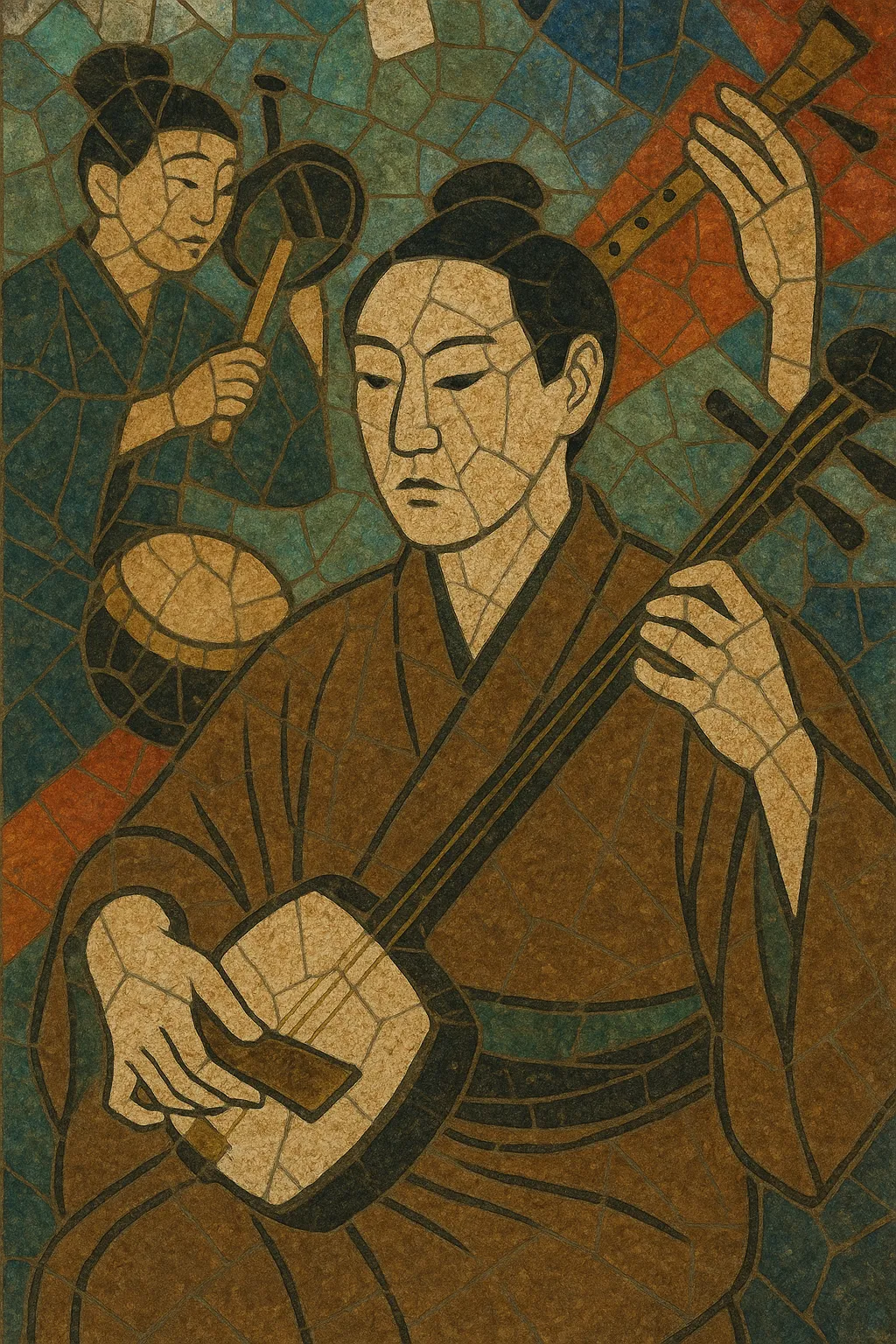Nagauta (literally “long song”) is a classical Japanese shamisen-and-voice genre that developed as the principal lyrical music for Kabuki dance (shosagoto). It features a lead singer (uta), multiple shamisens in rich unison/heterophony, and a Kabuki hayashi ensemble of flute (fue) and drums (kotsuzumi, otsuzumi, and occasionally taiko).
Musically, nagauta draws on Edo-period aesthetics: flexible rhythm, careful use of silence (ma), and modal colors associated with the in/yo (miyako-bushi) modes. It can be highly pictorial, cueing stage action with instrumental passages, shouts (kakegoe) from drummers, and timbral effects. While deeply theatrical, nagauta also exists as a concert tradition performed independently of the stage.
Nagauta emerged in Edo (Tokyo) during the early 1700s as Kabuki’s lyrical long-song counterpart to narrative jōruri styles. As Kabuki dance spectacles grew more elaborate, musicians standardized an ensemble of multiple shamisens, singer(s), and the hayashi of flute and drums. The Kineya and Fukuhara schools shaped repertory, pedagogy, and performance practice.
By the late Edo period, nagauta had a sizable repertory tied to dances and character types. It cultivated heterophonic textures, ornamented shamisen lines, and flexible tempo governed by stage action. Drum calls (kakegoe), stylized flute motives, and sectional design aligned with the theatrical arc (often reflecting the jo–ha–kyū principle of introduction–development–rush).
In the Meiji era (late 19th–early 20th centuries), nagauta continued in Kabuki while also entering the concert hall. New works (shinkyoku) for shamisen idioms were composed with modern sensibilities, and teaching systems of the major schools expanded. Recording and broadcasting in the 20th century helped codify performance lineages and preserve canonical pieces.
Today, nagauta remains a living classical tradition. It is performed in Kabuki theaters and in recital formats, taught through iemoto schools, and documented on recordings. While faithful to inherited style, modern performers sometimes commission or arrange pieces for concert presentation and cross-cultural projects, keeping the idiom vibrant.


